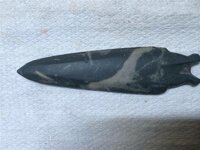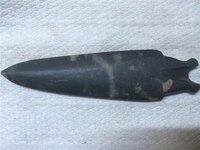Charl
Silver Member
Wow. The Maritime Archaic is known for ground slate points, lances, bayonets, etc. Mostly coastal Maine. This thing is extremely unusual, and apparently authentic....
On The Trail: Attic treasure | The Recorder
On The Trail: Attic treasure | The Recorder
Amazon Forum Fav 👍
Attachments
Last edited:
Upvote
0






